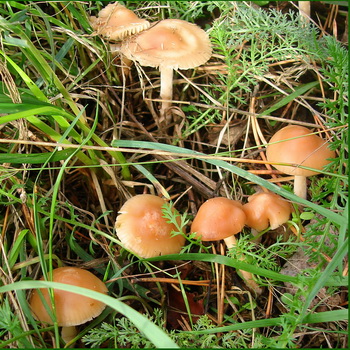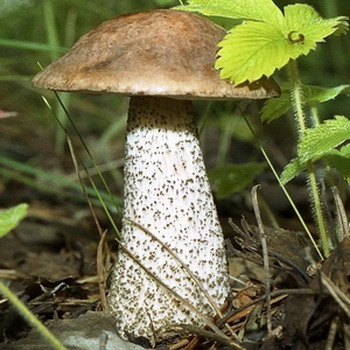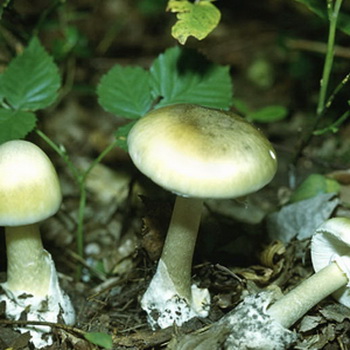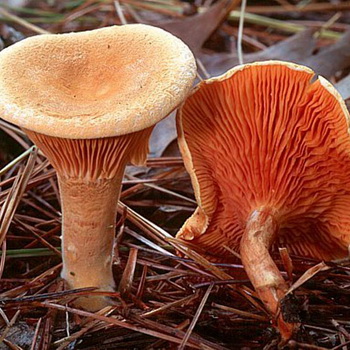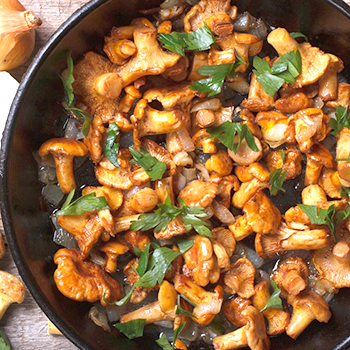False autumn mushrooms: photo, video, description, how to distinguish edible mushrooms from poisonous
 Autumn mushrooms begin to bear fruit at the end of August. Throughout September and half of October, you can collect a large number of mushrooms, and it is this time that is the peak of the collection of autumn mushrooms. Each year, depending on the climatic conditions, the fruiting waves of these mushrooms can be from 2 to 3. In addition, the peculiarity of autumn mushrooms is that they grow very quickly and abundantly, however, they also disappear quickly. For lovers of "quiet hunting" it is important not to miss the beginning of the collection of these fruiting bodies.
Autumn mushrooms begin to bear fruit at the end of August. Throughout September and half of October, you can collect a large number of mushrooms, and it is this time that is the peak of the collection of autumn mushrooms. Each year, depending on the climatic conditions, the fruiting waves of these mushrooms can be from 2 to 3. In addition, the peculiarity of autumn mushrooms is that they grow very quickly and abundantly, however, they also disappear quickly. For lovers of "quiet hunting" it is important not to miss the beginning of the collection of these fruiting bodies.
Autumn mushrooms grow almost throughout Russia in deciduous and coniferous forests, which are more than 30 years old. About 200 species of trees, including rotten stumps, roots and felled trunks, are chosen as a habitat for mushrooms. Mushroom pickers, knowing where to look for autumn mushrooms, can pick these mushrooms in the same places for 10-15 years in a row.
However, when collecting these fruiting bodies, you need to remember the precautions: edible honey fungus has a poisonous twin - false autumn honey fungus.
How to distinguish normal autumn mushrooms from false sulfur-yellow
Some normal autumn mushrooms and false counterparts are very similar. The false inedible relative of the real honey fungus belongs to the genus Gifolom and Psatirella. Some are considered inedible, while others are completely poisonous. If you do not know what kind of mushroom you are putting in the basket, it is better not to risk it and give up the idea of taking it with you. Therefore, before going to the forest for mushrooms, it is important to study the photo and description of false autumn mushrooms.


The sulfur-yellow pseudo-honey is considered a poisonous mushroom that looks like autumn mushrooms.
Latin name:Hypholoma fasciculare.
Family: Stropharia.
Genus: Gifoloma.
Synonyms: Agaricus fascicularis, Naematoloma fascicularis.
Hat: diameter from 2 to 7 cm, bell-shaped, in adulthood it becomes prostrate with a yellow-brown or sulfur-yellow color. The edges of the cap are much lighter, and the center is almost reddish-brown. In this case, the difference between autumn mushrooms and false ones is clearly visible on the hat.
Leg: fibrous, even and hollow. Length can be up to 10 cm, thickness up to 0.5 cm, light yellow hue.


Pulp: very bitter and has an unpleasant odor. The color of the flesh is whitish or light yellow.
Plates: thin and frequent, adherent to the peduncle. At a young age, they have a sulfur-yellow color, then they become greenish and even black-olive.
Edibility: poisonous mushroom.
Spreading: grows in large colonies on old dying trees, rotten stumps of deciduous and coniferous trees. Often settles on lying trunks, broken branches and near roots.
Collection season: the peak occurs at the end of August and September.
Description and photo of false autumn mushrooms honey agarics will help you identify these dangerous twins.
What Psatirell Candoll's false autumn mushrooms look like (with photos)
Another false fungus that looks like an autumn real mushroom is the false foil of Psatirell Candoll.
Latin name:Psathyrella candolleana.
Family: Psatirella.
Genus: Psatirella.
Synonyms: Psathyra candolleanus, Agaricus candolleanus.


Hat: hemispherical at a young age, bell-shaped at maturity. Then the cap opens and becomes almost flat with a tubercle in the middle. The cap is from 3 to 9 cm in diameter with wavy edges, which often crack. The top of the caps of young mushrooms are covered with small scales that quickly disappear. The caps themselves dry out quickly and become very brittle. The color ranges from yellow to creamy white or almost matte.
Leg: up to 0.6, sometimes 0.8 cm thick, up to 10 cm high. Has a thickened base of white or cream shade. The surface of the leg is smooth, fluffy under the cap with the remnants of a blanket in the form of hanging flakes.
Pulp: fragile, white, thin, odorless and tasteless.


Plates: narrow, dense and adherent to the peduncle. Young specimens have a whitish color of the plates, which during growth changes to a purple-gray, and then turns into a dark brown.
Edibility: poisonous mushroom, sometimes referred to as conditionally edible.
Spreading: grows in large colonies on deciduous trees, on rotten stumps or on the ground near stumps and trunks.
Collection season: from May to the end of October.
We offer you to see how to distinguish false mushrooms from autumn ones thanks to the presented photo?
It is worth noting that false species of honey agaric grow in the same places as edible ones - these are raw deadwood, trunks of fallen trees, stumps and even living trees. Therefore, novice mushroom pickers can make a mistake and collect a false species. It is photographs of false autumn mushrooms that will help you to understand mushrooms well and know all the signs of these dangerous twins.
Often, many false species of honey agarics refer to conditionally edible fruit bodies, only of low quality. To prepare them, you need to have enough skills, but even in this case, the safety of mushrooms has not been proven.


What false autumn mushrooms look like - see the photo showing all the differences. And the main difference is the ring-skirt on the leg of the mushroom, or rather its absence. Poisonous species of honey agarics do not have such a ring.
There are other differences that help to choose only real edible autumn mushrooms. For example, the smell: all false pigs have a mushroom odor. The hats of false hooters are always of brighter colors, which will indicate the toxicity of the carrier of this species. Not a single false piglet has scales on their caps. In addition, the plates of such mushrooms are greenish or olive in color, smoothly turning to an almost black hue.
There is one more difference - the bitter taste of the mushroom, although experts strongly recommend not to taste the mushrooms.
Having compared all the presented photos of false and edible autumn mushrooms, you can safely go to the forest for mushrooms. But even if you are still not sure about the edibility of the mushroom, do not take it into your basket.
Watch also a video on how to distinguish autumn mushrooms from false representatives:






